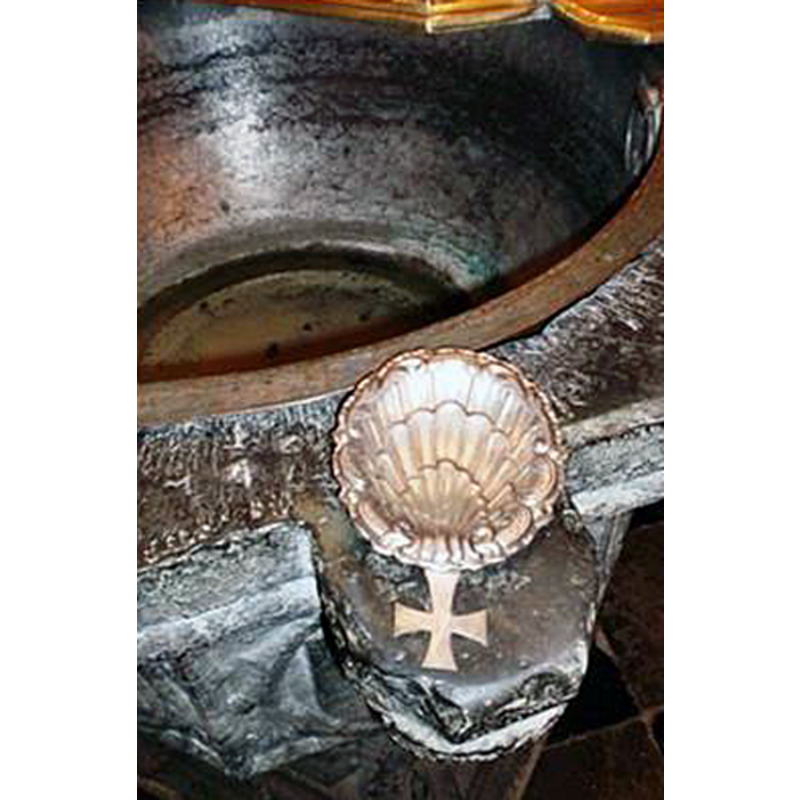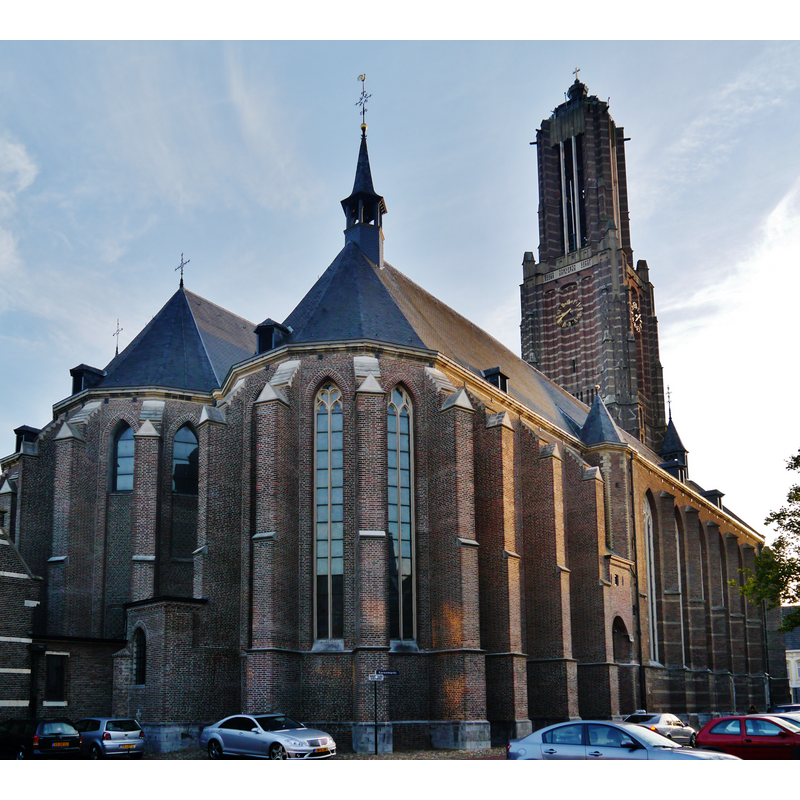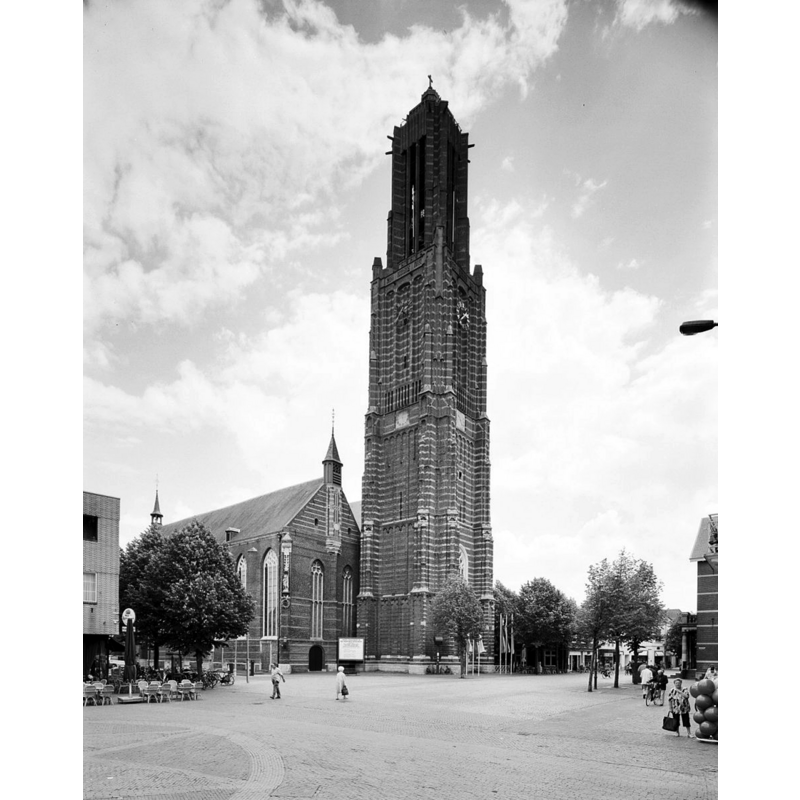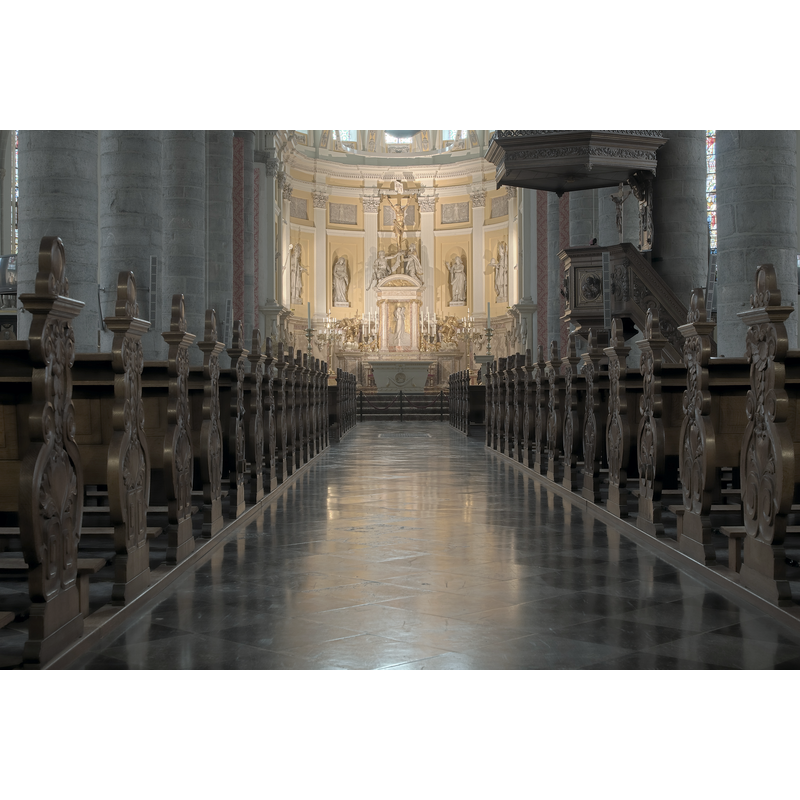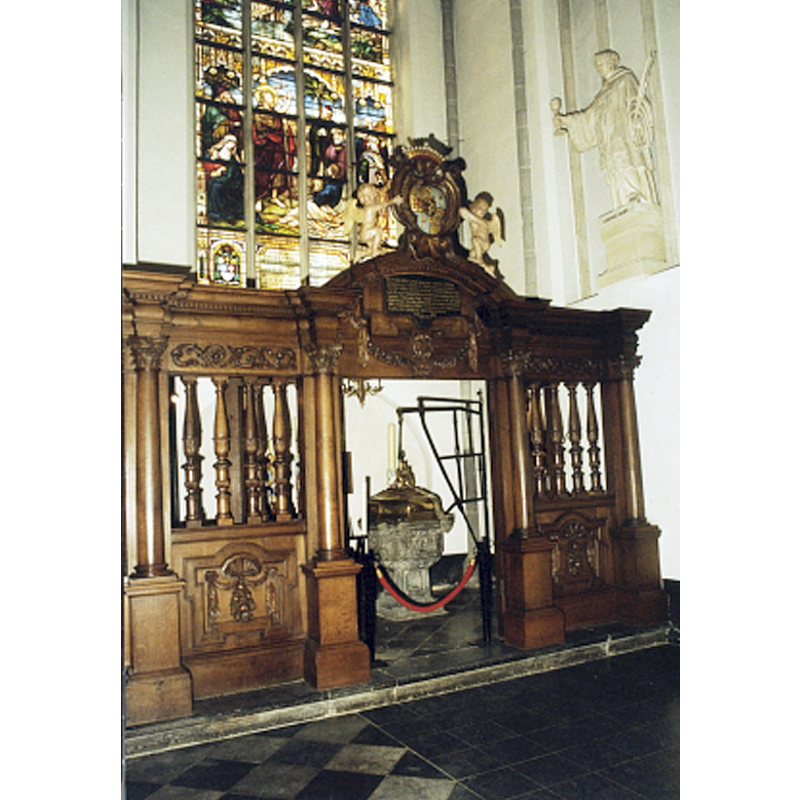Weert

Image copyright © Fons Boink, 2021
No known copyright restriction / Fair Dealing
Results: 11 records
Apostle or saint - Evangelists - symbol - 4 - in a circle
Scene Description: a winged bull on this side
Copyright Statement: Image copyright © Fons Boink, 2021
Image Source: edited detail of a digital photograph by Fons Boink [https://www.santiago.nl/jacobalia/doopschelp/] [www.kerkgebouwen-in-limburg.nl] [accessed 30 December 2021]
Copyright Instructions: No known copyright restriction / Fair Dealing
design element - architectural - column - clustered columns - 4
Copyright Statement: Image copyright © Fons Boink, 2021
Image Source: edited detail of a digital photograph by Fons Boink [https://www.santiago.nl/jacobalia/doopschelp/] [www.kerkgebouwen-in-limburg.nl] [accessed 30 December 2021]
Copyright Instructions: No known copyright restriction / Fair Dealing
design element - motifs - floral and/or foliage
Scene Description: on different areas of the basin
Copyright Statement: Image copyright © Fons Boink, 2021
Image Source: edited detail of a digital photograph by Fons Boink [https://www.santiago.nl/jacobalia/doopschelp/] [www.kerkgebouwen-in-limburg.nl] [accessed 30 December 2021]
Copyright Instructions: No known copyright restriction / Fair Dealing
design element - motifs - floral and/or foliage
Scene Description: at the dorners
Copyright Statement: Image copyright © Fons Boink, 2021
Image Source: edited detail of a digital photograph by Fons Boink [https://www.santiago.nl/jacobalia/doopschelp/] [www.kerkgebouwen-in-limburg.nl] [accessed 30 December 2021]
Copyright Instructions: No known copyright restriction / Fair Dealing
symbol - shield - emblem - Christ - the instruments of the Passion?
Scene Description: and/or Christ other emblems?
Copyright Statement: Image copyright © Fons Boink, 2021
Image Source: edited detail of a digital photograph by Fons Boink [https://www.santiago.nl/jacobalia/doopschelp/] [www.kerkgebouwen-in-limburg.nl] [accessed 30 December 2021]
Copyright Instructions: No known copyright restriction / Fair Dealing
view of basin - upper view - detail
Scene Description: showing the lined interior of the basin and the little silver(?) shell used for baptisms
Copyright Statement: Image copyright © Fons Boink, 2021
Image Source: edited detail of a digital photograph by Fons Boink [https://www.santiago.nl/jacobalia/doopschelp/] [www.kerkgebouwen-in-limburg.nl] [accessed 30 December 2021]
Copyright Instructions: No known copyright restriction / Fair Dealing
view of church exterior - northeast view
Scene Description: Source caption: "Martinuskirche, Weert, Provinz Limburg, Niederlande"
Copyright Statement: Image copyright © Zairon, 2015
Image Source: digital photograph 31 July 2015 by Zairon [https://commons.wikimedia.org/wiki/File:Weert_Sint_Martinuskerk_1.jpg] [accessed 30 December 2021]
Copyright Instructions: CC-BY-SA-4.0
view of church exterior in context - northwest view
Scene Description: Source caption: "Sint Martinuskerk: Overzicht noordwestgevel met kerktoren (opmerking: Gefotografeerd voor Monumenten In Nederland Limburg)"
Copyright Statement: Image copyright © Rijksdienst voor het Cultureel Erfgoed, 2021
Image Source: digital image of a June 2001 B&W photograph by J.P. de Koning, in the Rijksdienst voor het Cultureel Erfgoed [https://commons.wikimedia.org/wiki/File:Overzicht_noordwestgevel_met_kerktoren_-_Weert_-_20354341_-_RCE.jpg] [accessed 30 December 2021]
Copyright Instructions: CC-BY-SA-4.0
view of church interior - nave - looking east
Scene Description: Source caption: "Sint Martinuskerk, interieur, middenbeuk met zicht op altaar."
Copyright Statement: Image copyright © Jan van den Eijnden, 2009
Image Source: digital photograph 4 February 2009 by Jan van den Eijnden [https://commons.wikimedia.org/wiki/File:Interieur_middenbeuk.jpg] [accessed 30 December 2021]
Copyright Instructions: CC-BY-SA-3.0-NL
view of font and cover
Copyright Statement: Image copyright © Fons Boink, 2021
Image Source: edited detail of a digital photograph by Fons Boink [https://www.santiago.nl/jacobalia/doopschelp/] [www.kerkgebouwen-in-limburg.nl] [accessed 30 December 2021]
Copyright Instructions: No known copyright restriction / Fair Dealing
view of font and cover in context
Scene Description: Source caption: "Doopvont in de St. Martinuskerk geschonken door Jan van der Croon - Municipal Archives of Weert, Netherlands"
Copyright Statement: Image copyright © Municipal Archives of Weert, Netherlands, 2021
Image Source: digital image in the Municipal Archives of Weert, Netherlands [https://www.europeana.eu/nl/item/2021639/OBJECT693] [accessed 30 December 2021]
Copyright Instructions: CC-BY-SA
INFORMATION
FontID: 23641WEE
Object Type: Baptismal Font1
Church/Chapel: Rooms-katholieke Sint Martinustkerk
Church Patron Saints: St. Martin of Tours
Church Location: Markt 8, 6001 EK Weert, Netherlands
Country Name: Netherlands
Location: Limburg
Directions to Site: Located in the town centre, off the N564-N292 road junction, W of the A2/E25, 20 km NW of Roermond, about 30 km SE of Eindhoven
Font Location in Church: Inside the church, in the baptistery
Date: ca. 1512?
Century and Period: 16th century, Late Gothic? / Renaissance?
Workshop/Group/Artisan: Mosan font?
Cognate Fonts: [cf. FontNotes]
Credit and Acknowledgements: We are grateful to Pol Herman for bringing this font to our attention and for his help in documenting it
Church Notes: A church reported here in 1056; present church completed 1456 may have included elements of the earlier building; these earlier elements disposed off ca. 1500; the tower underwent several modifications, the latest in the 1960s. -- listed church [Rijksmonument no. 38446]
Font Notes:
Click to view
The entry for this church in the Kerkgebouwen in Limburg [https://www.kerkgebouwen-in-limburg.nl/kerken/weert/martinus] [accessed 30 December 2021] reports an illustrates a 15th-century baptismal font in it. The entry for this church in Rijksmonumenten [https://rijksmonumenten.nl/monument/38446/sint-martinuskerk/weert/] [accessed 30 December 2021] reports a late-Gothic baptismal font made of limestone in the 15th-century. The entry in Reliwiki [https://reliwiki.nl/index.php/Weert,_Markt_8_-_Martinus] [accessed 30 December 2021] mnetions the font in similar terms to the other two entries mentioned above. The font consists of an octagonal basin with the usual torus-scotia-torus moulding arrangement below the rim found on these fonts; there are at least two protrusions on two of the sides [more?], one of which appears to be a human head; the panels on the basin sides appear to alternate between the symbols of the Four Evangelists and shields with the Instruments of the Passion, with foliage motifs in the spandrels and other spaces; the uderbowl is also de corated [foliage?/floral?]; the square pedestal base has four corner colonnettes constructional to the central block; foliage(?) motifs decorated the upper corner of the lower base, which is otherwise moulded. The font cover is an octagonal done and its base has extensions that match the stone protrusions of the basin upper rim; the finial is a statued of St. Martin on horseback sharing his cape with a poorman, and one of the sources claims it is a 1900 replica copy of the 15th-century original in the British Museum. A double wall-mounted side crane [cast iron?] operates the sideways movement of the cover. The inside of the stone basin is lined with metal. Pol Herman has sent BSI (e-mail of 30 December 2021) some of his views on this font, and some of the correspondence he has exchanged on it with other sources, an English summary of which is included below.
Pol Herman's notes: "In the book by J. Coenen, "De Sint Martinuskerk in Weert, kunsthistorisch gezien" (1983), the following is stated about the baptismal font: Saint Martin's church suffered heavily from the iconoclasm on August 27, 1566. A chronicle from that time mentions that all statues, chairs and lecterns were smashed to pieces. "Everything lay there as if one were in a forest where trees had been felled. What they could not do that night, they did the next day, until everything was destroyed and spoiled." Only the baptismal font, which is still present today, has survived this destruction, albeit with some damage. The lions at the foot of the four corner columns are partly broken off. The low relief tessellations of the octagonal shell are decorated with the evangelist symbols and coats of arms with the “arma Christi”, four portrait-like (schematized) heads are applied on the edge of the basin. This is a Maasland Gothic baptismal font, which, as discussed in the case of the Mosan capitals of the church, was probably delivered ready-made from the quarry.” Here under, you will find what I have written to the person responsable at the Archives of the city of Weert : (note that in her e-mail below, she says that the old church of Weert was demolished in 1500. The new (existing) church was consacreted in 1512. In 1528/1529 the old tower was taken down). There is a short video [Dutch language] featuring the baptismal font in its cover in https://vimeo.com/248452485 [accessed 30 Decembre 2021]. The baptismal font in Weert is indeed Mosan, in blue limestone, from a stonemason's workshop that was attached to a quarry, probably somewhere between Namur and Dinant. However, the Weerter baptismal font is much more artistic than the standard, average fonts that were produced in large numbers. The rich decoration indicates that we can speak here of a Renaissance font rather than a Gothic font. Such luxurious fonts were probably expensive. The few similar baptismal fonts that have survived are either in an important church or in a village church where a wealthy lord of the castle lived. sometimes in a church that had a lot of income as a place of pilgrimage. Mind you: I probably don't know them all. Your baptismal font was damaged during the iconoclasm, so it is older than 1566. But I don't think it dates from the fifteenth century, in those times the decoration of the flanks of the baptismal fonts was not so exuberant. A good first indication of the date can be derived from the baptismal font of the St. Follian's Church in Neerlinter, on which the year 1551 is chiseled. The foot is almost identical. However, the decoration of the basin does not show the four evangelists. The column is different, it already has the shape of the Baroque. The baptismal font of Neerlinter is therefore probably later than that of Weert. The sixteenth-century baptismal font of Fallais is more comparable. I think Fallais' baptismal font may have come from the same workshop as Weert. Foot and column are similar. The basin shows the four evangelists and coats of arms, just like in Weert. One of the coats of arms has been identified as belonging to the Bourgogne family. The Bourgogne family became Lord of the impressive castle of Fallais from 1501. The first lord was Baudoin de Bourgogne, bastard son of Philip the Good. He already died in 1508. He probably did not give the baptismal font. After that, Jacques de Bourgogne was the most famous lord of the castle, between 1542 and 1557. He was a friend of Calvin and already joined Calvinism in 1543. In March 1543 he therefore had to flee to Cologne. He then went to live in Basel, Geneva and Strasbourg, where he died. So he will not have donated the baptismal font either. Remains : Philippe of Burgundy, Lord of Fallais between 1509 and 1542, a bachelor.
A further communication from Pol Herman to BSI (e-mail of 12 May 2022) adds: "Erik Caris, who wrote a study about the church of Weert, has given the following commentary about the dating of “ca. 1525” for the baptismal font of Weert. [...], in De bouwgeschiedenis van de St.-Martinuskerk te Weert, Caris, Erik. (1993) - In: De Maasgouw vol. 112 (1993) p. 1-26, where he writes: "‘De datering van 1525 lijkt gekoppeld te zijn aan het stoppen van de bouw van de toren van de kerk. Je zou kunnen veronderstellen dat het doopvont aanwezig geweest zal zijn toen het westelijke deel van de kerk, waar de doopkapel is (en voor zover ik weet altijd geweest is) klaar was. Volgens de goed onderbouwde theorie van Erwin van Pelt (Onderzoek naar de kappen van de Sint Martinuskerk, in: De Sint Martinuskerk anders belicht, Weert 2010) zou dit geweest zijn in 1512 (wijding van de kerk). Dat zou de datering van de doopvont dus in of kort voor 1512 plaatsen. [...] Uiteraard blijft de mogelijkheid bestaan dat de doopvont pas na de voltooiing van de kerk geplaatst is. De bouw van de toren is overigens niet, gestopt in 1525 maar begonnen in 1528 (eveneens volgens Van Pelt). Dit laat zien dat er dus nog vrij ver in de 16e eeuw voldoende financiële middelen aanwezig waren om aan de torenbouw te beginnen en dus waarschijnlijk ook om een nieuwe vont te bekostigen.’" Pol Herman provides a rough English tranaslation of the Dutch text: "‘The dating of 1525 seems to be linked to the end of the construction of the church tower. One might assume that the baptismal font would have been in place when the western part of the church, where the baptistery chapel is (and as far as I know always has been) situated, was completed. According to the well-founded theory of Erwin van Pelt (Research into the roofs of the Sint Martinuskerk, in: De Sint Martinuskerk anders belicht, Weert 2010) this would have been in 1512 (consecration of the church). This event could place the date of the baptismal font in or shortly before 1512. Of course, the possibility remains that the baptismal font was only installed after the completion of the church. The construction of the tower did not end in 1525, but rather started in 1528 (also according to Van Pelt). This shows that sufficient financial resources were available quite late into the 16th century to start building the tower and therefore probably also to pay for a new font.'"
A further communication from Pol Herman (e-mail of 13 January 2024) notes on the presence of lions on the bases of several fonts: "The 4 lions at the corners, along with the gothic arches on the sides of the column, can (only) be found on the fonts of: Weert (lions have been chopped off during the iconoclastic fury), installed probably around 1512; Marche-en-Famenne, probably around 1520; Fallais, probably after 1509 and Glons".
COORDINATES
Church Latitude & Longitude Decimal: 51.253611, 5.706944
Church Latitude & Longitude DMS: 51° 15′ 13″ N, 5° 42′ 25″ E
UTM: 31U 688893 5681509
MEDIUM AND MEASUREMENTS
Material: stone, limestone
Font Shape: octagonal (mounted)
Basin Interior Shape: round
Basin Exterior Shape: octagonal
Drainage Notes: metal lining inside the basin
LID INFORMATION
Date: ca. 1900?
Material: metal, brass?
Apparatus: yes; side crane
Notes: St Martin's statue finial is 1900 cast of a 15thC original in the British Museum
